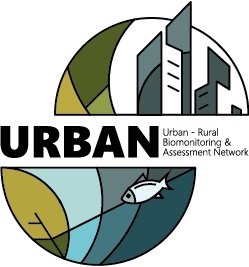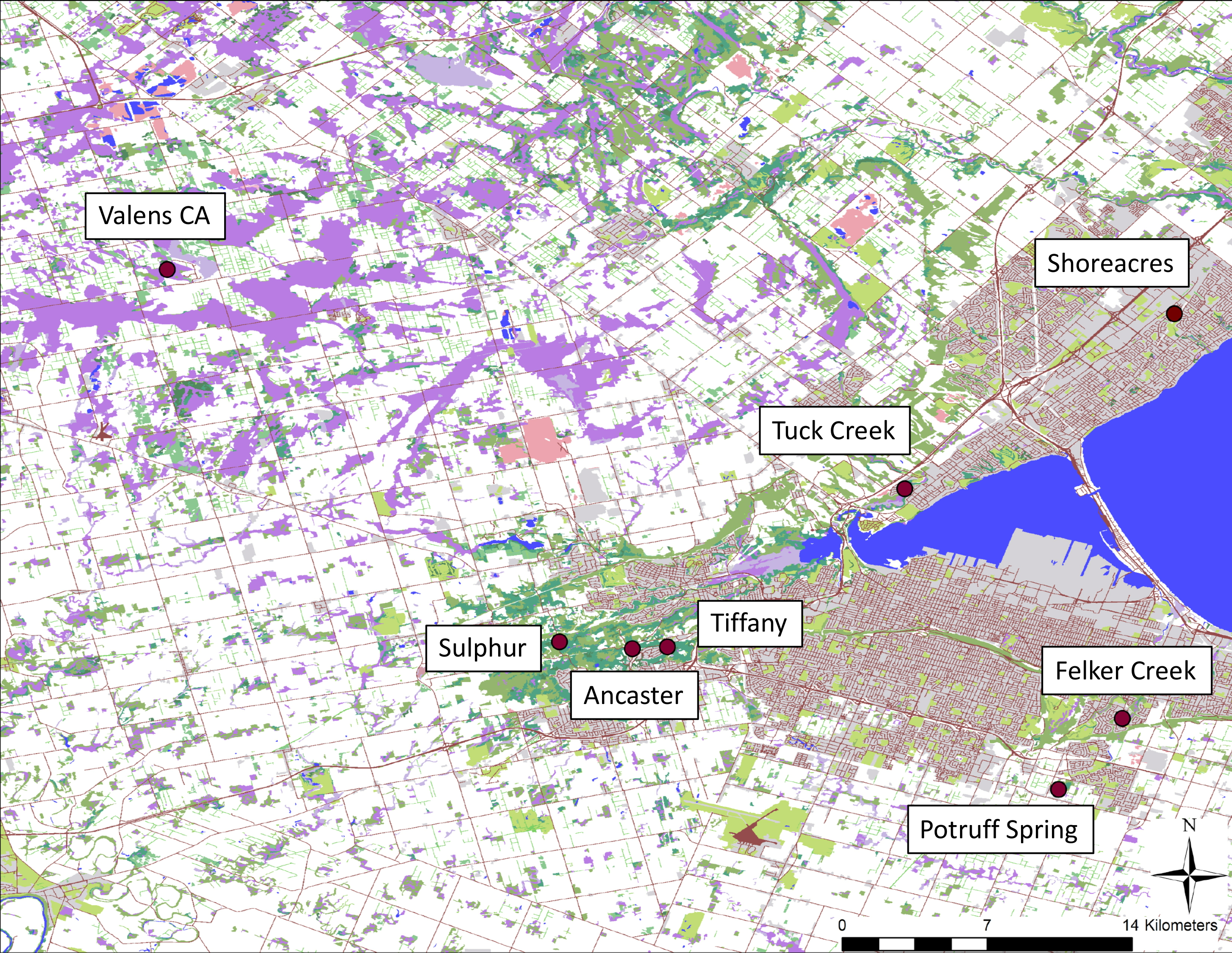


Map of URBAN sites
When URBAN was first formed, the Project Coordinator met with all our partners (representatives of the Hamilton Region and Halton Region Conservation Authorities, the Grand River Conservation Authority, the Royal Botanical Gardens, Environment Canada, the Ontario Ministry of Environment and Bird Studies Canada) to determine data gaps and long-term data needs. We continue to communicate via email and phone to make decisions on site selection, especially when we needed to choose more wetlands and streams
Every year since 2010, we have organized a spring training workshop to train volunteers in using the Marsh Monitoring Protocol to monitor birds and amphibians. These workshops are broadly advertised via our website, networking with environmental groups in the city, announcements posted on campus and in neighbourhoods near McMaster and in the local newspapers. These workshops have attracted several elementary and high school students, who then bring their parents. To increase participation by aboriginal youth living on reserves, we contacted the Chiefs of the Saugeen Ojibway Nation and got their agreement to support a pilot program for their youth during the spring and summer of 2013.
Over the past 4 years, URBAN volunteers have collected Marsh Monitoring Program (MMP) data for 22 marshes and Ontario Benthos Biomonitoring Network (OBBN) data for 8 streams in the Hamilton region. Data collected each year are forwarded to Bird Studies Canada and the Ontario Ministry of Environment OBBN portal. The number of people interested in our programs have increased steadily as URBAN has gained traction over the years. Every February since 2011, we have been invited to present the scientific data collected from the MMP bird and amphibian surveys conducted by our volunteers at the Royal Botanical Gardens Project Paradise workshop. This is an important avenue for transferring the results of volunteer efforts to local managers so they can make important decisions about the use of their land and locations of sensitive species.